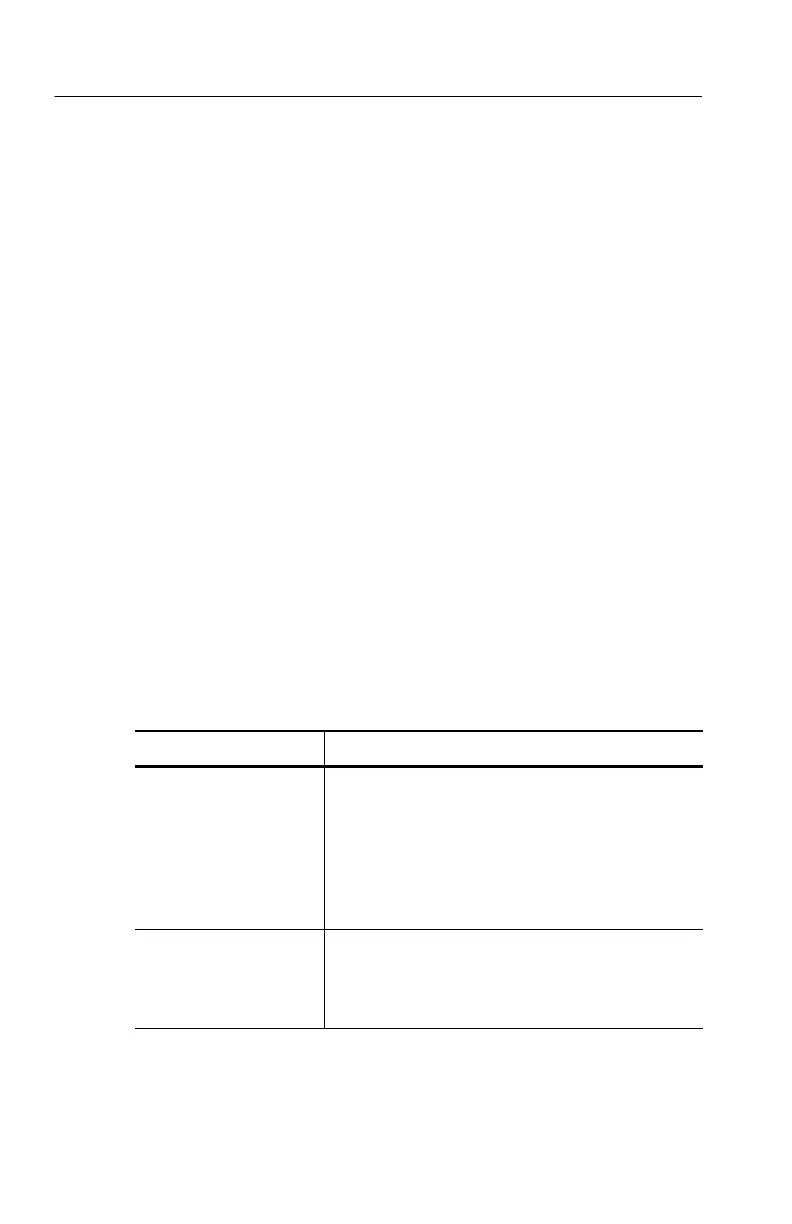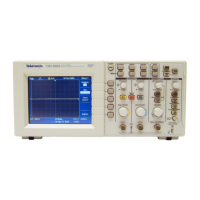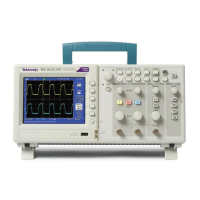Command Syntax
2−2
TDS200/1000/2000 Series Oscilloscope Programmer Manual
Command and Query Structure
Commands consist of set commands and query commands (usually
simply called commands and queries). Commands change oscillo-
scope settings or perform a specific action. Queries cause the
oscilloscope to return data and information about its status.
Most commands have both a set form and a query form. The query
form of the command is the same as the set form except that it ends
with a question mark. For example, the set command ACQuire:MODe
has a query form ACQuire:MODe?. Not all commands have both a set
and a query form; some commands are set only and some are query
only.
A few commands do both a set and query action. For example, the
*CAL? command runs a self-calibration program on the oscilloscope,
then returns the result of the calibration.
A command message is a command or query name, followed by any
information the oscilloscope needs to execute the command or query.
Command messages consist of five different element types.
Table 2-2 lists and describes the five element types.
Table 2−2: Command message elements
Symbol Meaning
<Header>
The basic command name. If the header ends with
a question mark, the command is a query. The
header may begin with a colon (:) character; if the
command is concatenated with other commands the
beginning colon is required. The beginning colon
can never be used with command headers
beginning with a star (*).
<Mnemonic>
A header subfunction. Some command headers
have only one mnemonic. If a command header has
multiple mnemonics, they are always separated
from each other by a colon (:) character.

